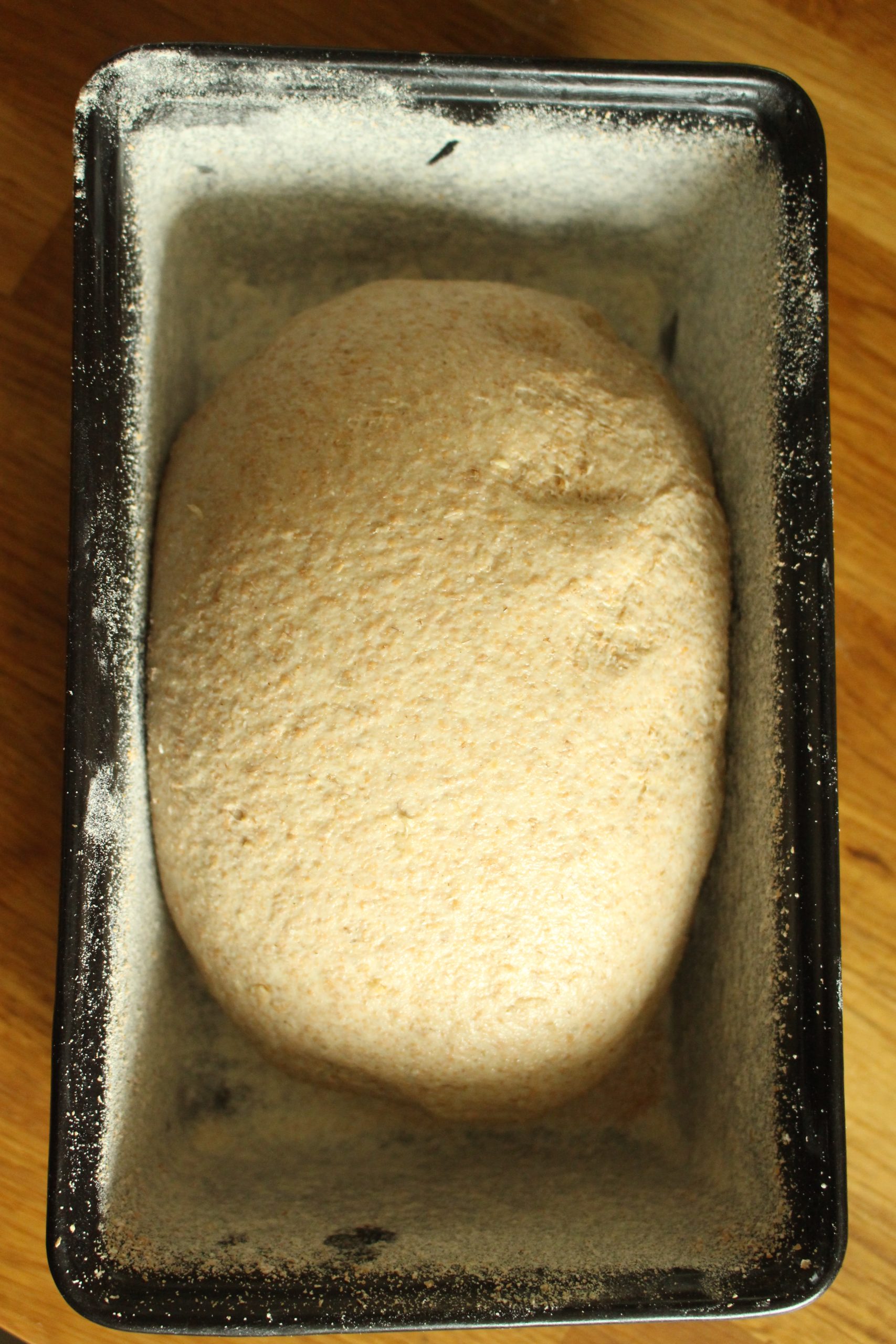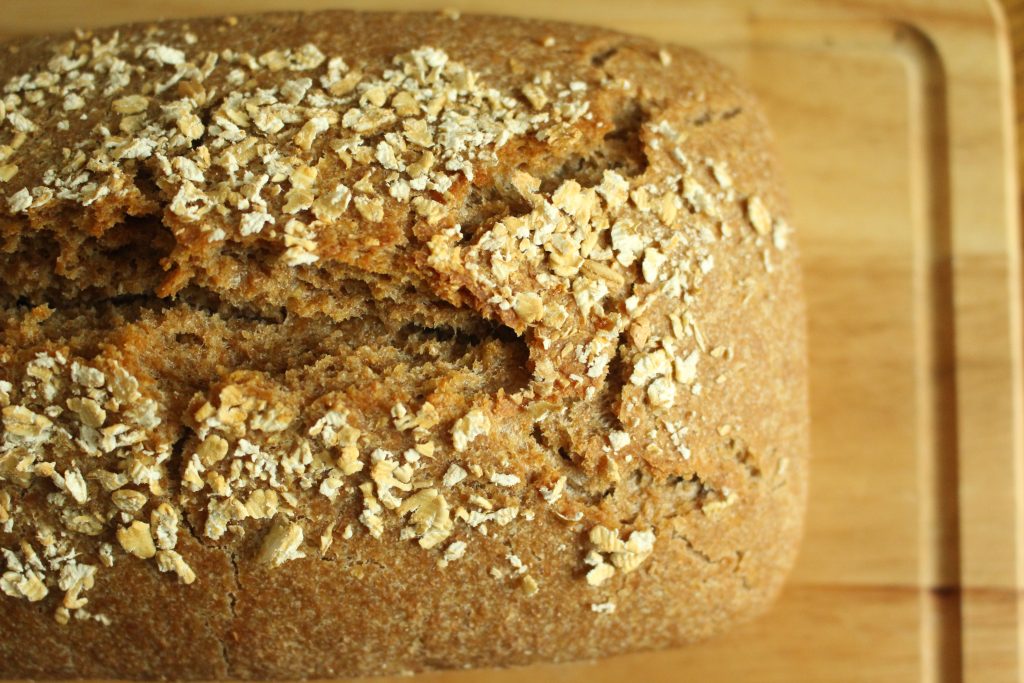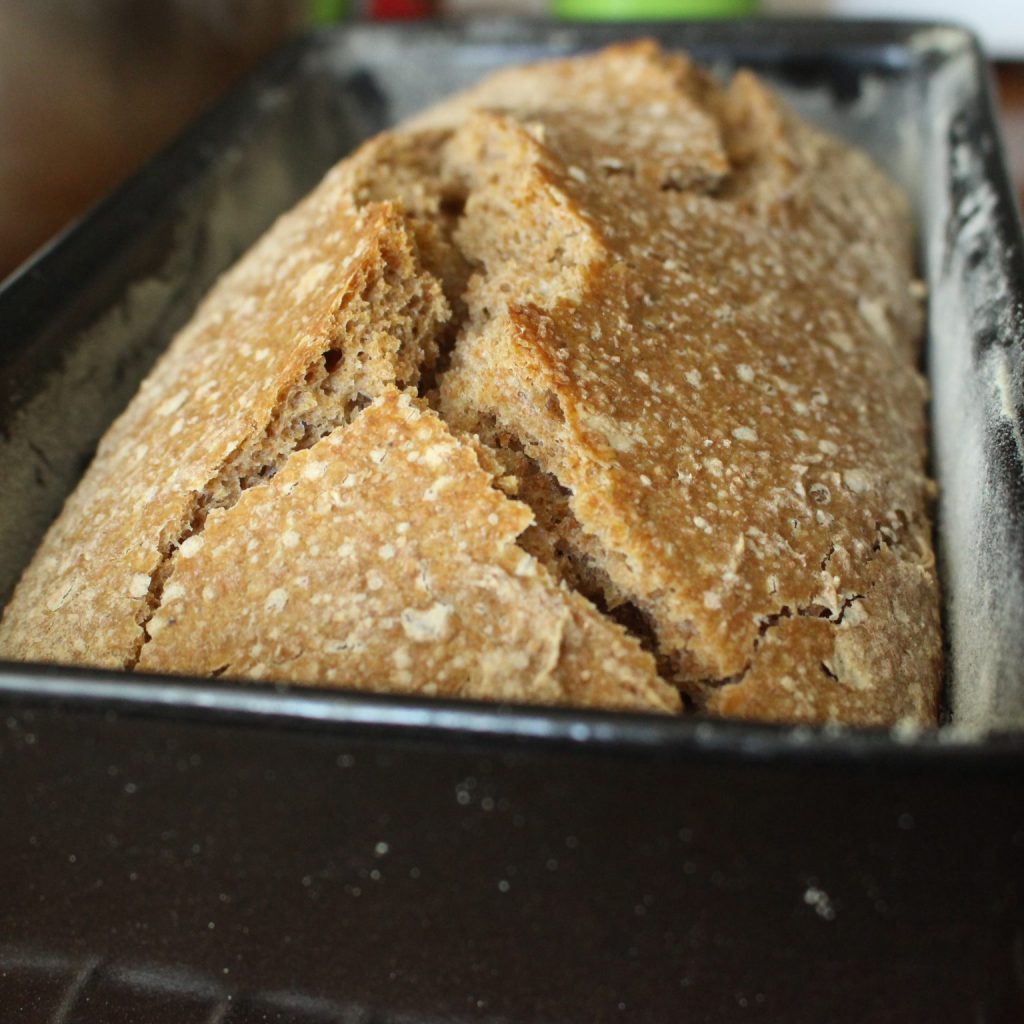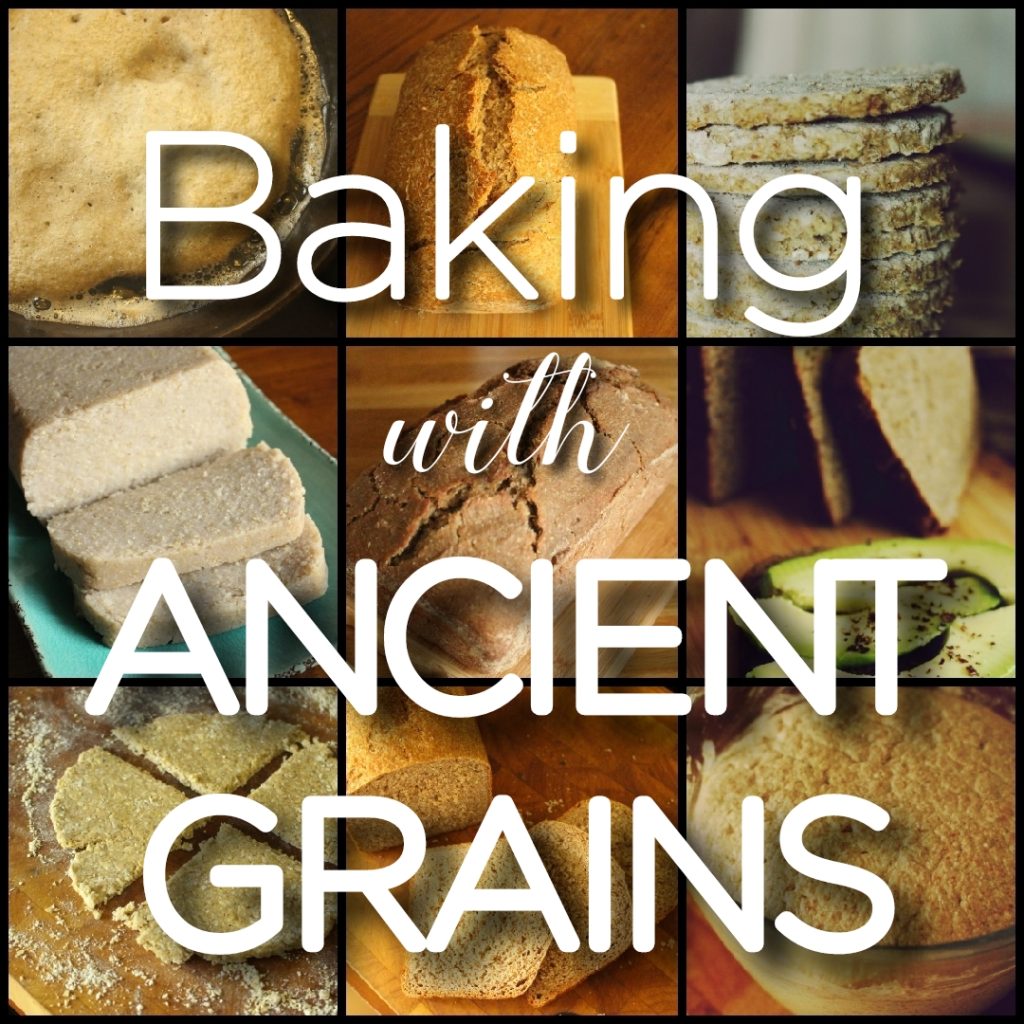
In this post I will show you how to make a wholegrain sourdough spelt bread which includes leftover oatmeal in the dough. By using both spelt and oatmeal you will end up with a nutty-tasting, delicious sourdough bread with a super-soft crumb.
This bread can be adapted to use wheat instead of spelt, see the FAQ section below for details.
I’m in the UK, where oatmeal is called porridge. To avoid any confusion in this recipe, I’ll be using both words together.
Why put oatmeal/porridge in your sourdough bread?
There are long traditions of including a portion of previously cooked grain in breads. Making oatmeal/porridge gelatinises the starches in the grain, creating the familiar gloopy consistency. Adding this to your bread changes the structure of the crumb – making it softer and enabling the resulting bread to last longer. This is particularly useful with spelt loaves which have a tendency to dry out after baking.
Oatmeal Sourdough Bread

Ingredients:
600g wholegrain spelt
10g salt
330g water
120g leftover cold oatmeal/porridge
80g active sourdough starter
15g honey (optional)
Extra rolled oats for decoration (optional)
Method:
- Put the wholegrain spelt flour and salt into a large bowl and mix well.
- In a large jug, mix the water with the cold oatmeal/porridge, breaking up the oatmeal/porridge against the side of the jug with the back of a spoon until there are no longer big blobs remaining and the mixture is homogenous.
- Add the active sourdough starter and the honey to the liquid ingredients and stir well.
- Pour the liquid ingredients into the spelt/salt. Mix initially using a spoon and then swap to your hand to bring together into a loose dough. Knead this dough for a few minutes.

- Cover the bowl and leave the mixture in a warm place to ferment, stretching and folding it once every hour.
- The length of this first, bulk fermentation will depend on your flour, the strength of your starter and the ambient temperature in your house. With home-ground spelt flour, an active rye sourdough starter and a proofing space of 24°C/75°F, my bulk fermentation takes three hours. If your conditions are different, it may take longer.
- As this is a bread made with wholegrain flour, do not expect to see as much rise in the dough as you would with white flour. I judge my wholegrain dough to be ready for proofing when tapping the bowl before a stretch and fold produces a hollow sound, it’s visibly larger and it feels light and airy in my hands. (If you’d like more in-depth information on knowing when to move on, check out my e-book Spelt Sourdough Every Day.)
- When the dough is ready, prepare a loaf pan. I like to use ceramic bakers for my spelt bread. I grease them with lard and then line that with flour.
- Shape the bread to fit your baker and place it in there!

- Cover the bread and leave in a warm place (as above) to proof. In my environment (24°C/75°F) this usually takes an hour to an hour and a half.
- Remember to preheat your oven before your bread is ready to go in. I like to check the progress of my loaf after 45 minutes. If I see that it is visibly larger, perhaps 20 to 25%, I will put the oven on.
- Preheat your oven to 210°C/410°F.
- If you’d like to add rolled oats to the top of your loaf, do this just before it goes into the oven. Lightly paint the top of the loaf with water and sprinkle with rolled oats, pressing down gently with your fingertips.
- Bake the loaf at 210°C/410°F for 15 minutes, then turn your oven down to 180°C/355°F for around 55 minutes.
- Check to see whether your loaf is done. You can assess this by tipping it out of your baker and tapping it on the bottom. If it is ready, it will sound hollow. You could also use a probe thermometer. I like to bake this bread to an internal temperature of 96°C/205°F.
- When done, remove the loaf from the pan and allow to cool fully on a cooling rack.
Oatmeal Sourdough Bread FAQs

Can I use wheat flour instead of spelt?
Absolutely! If doing so, this recipe will most easily convert to wholegrain wheat. It is likely that you may need to use different amounts of water and your fermentation times may be different. Baking the same bread a few times should help iron out any problems.
Can I include some white spelt flour?
Yes, and I have done so many times. As with any bread that has white flour included, it tends to rise more. I often make this oatmeal sourdough bread with 480g wholegrain spelt and 120g white spelt (making a total of 600g flour). When I do so I tend to reduce the water to 300g.
Can I use fermented oatmeal/porridge?
Yes! The resulting text will be the same, though the flavour just slightly different. If you want to know how to ferment your oatmeal/porridge, please check out my comprehensive post, How to Make Fermented Oats.
My dough looks looser/tighter than yours, what happened?
Every flour is different, and has different needs. Your flour may be more or less thirsty than mine. The best way to get the consistency of your dough correct is to try the same recipe a few times, noting the results for each bake, and changing water content if needed.
Does it matter what sourdough starter I use?
This recipe works with any sourdough starter, as long as it is active. I generally keep a rye sourdough starter for all of my breads, because I find it incredibly active and very easy to maintain. If you like to know more about my method, you can check out my pay-as-you-can video course, How to Make and Maintain a Rye Sourdough Starter, here.

Can I use oatmeal/porridge made of another grain?
Yes. I have often made this bread with oatmeal/porridge made from flaked barley and you could use any other type of leftover oatmeal.
My house isn’t warm enough, what can I do?
Look for a warm spot to keep your dough, you can get ideas from my blog post here . If you struggle with that, consider making your own proofing box – the instructions for how I did so inexpensively are here.
How long does is bread last?
Depending on the conditions in your house the bread scratch that, the bread can last five days and beyond. If it starts to get too firm for your liking, toasting will bring it back to life.
Can I freeze this bread?
It is possible to freeze this bread, and if you do so wrap it well and exclude any air. I have found, however, that spelt bread does not do as well as other breads in the freezer and if I do freeze it I tend to use the defrosted bread for toast.
Where can I learn more about baking sourdough with spelt?
If you love the taste of spelt and want to bake with it more, you’ll enjoy my ebook, Sourdough Spelt Every Day, with 11 foundational spelt recipes that I’ve been baking in my own home for over a decade.


Bring ancient grain baking into your kitchen!
Download my free 30-page guide with five healthy and tasty 100% ancient grains recipes.


Can I substitute einkorn for spelt without changing liquid amount?
You definitely can substitute einkorn, but you may need to change the liquid amount. Each flour (and individual crops of the same flour) has different water needs. I suggest you swap it out, hold back 50g of the liquid and the mix attentively, adding the extra (and more) water if needed.
If I wanted to bake a boule instead of a loaf using the Oatmeal Sourdough Recipe (50/50 blend of bread flour and einkorn whole wheat) would the oven temperature be the same? Thanks in advance and thanks so much for your website ❤️👍
It’s very difficult for me to confirm this. My temps are for 100% wholegrain spelt; your flour and oven are different and making a boule changes it even more. I’d try these temps as a starting point and adjust from there in subsequent bakes.
Thanks so much for your reply. I preheated Dutch oven for 30 minutes @410f. Put boule in with lid on and baked for 34 minutes. Removed lid, reduced temperature to 3:55 and baked an additional 26 minutes. This was the best tasting bread I have made yet. I left the fermenting steel cut oats on the kitchen counter for 2 days before making bread. Next time I plan to move them into fridge for 1-2 days extra to increase acetic acid prior to making bread. I’m sending a picture. ❤️
Here’s the picture 🤗
Hello, can I do cold proof in the fridge overnight for this bread recipe? If so, should I let it rise afterwards in room temperature before baking?
Yes, I have done this before, leaving it in a tightly-covered bowl overnight in the fridge. I would usually then let it warm a little in the morning before stretching/folding then panning it and watching the rise in the tin to determine when to put in the oven.